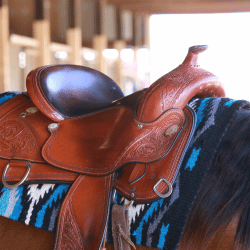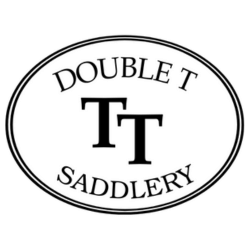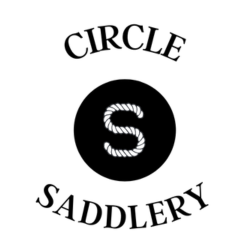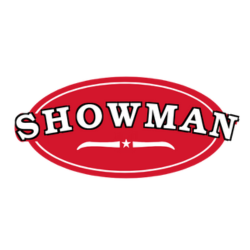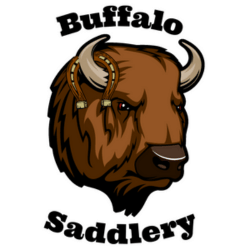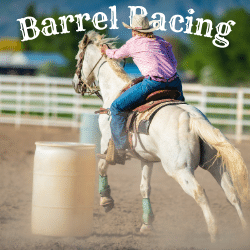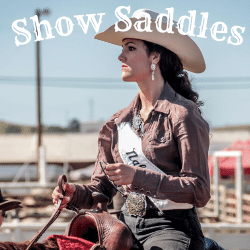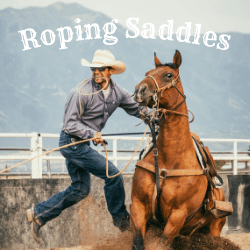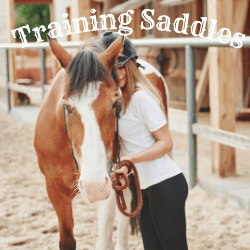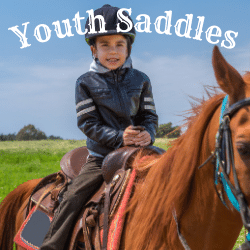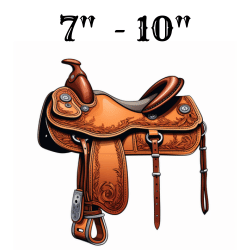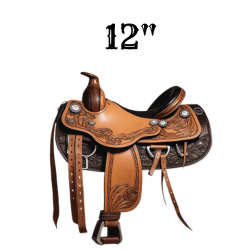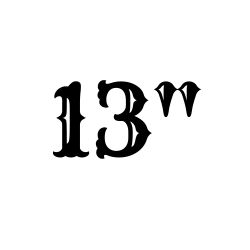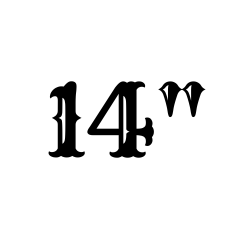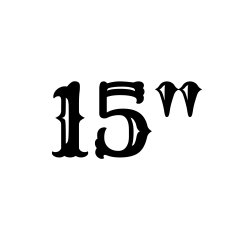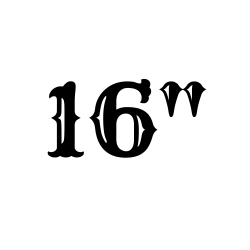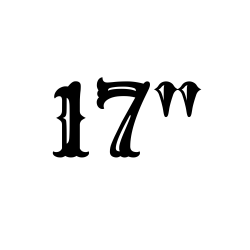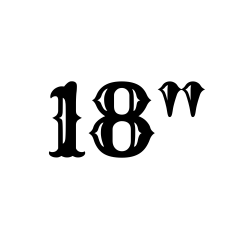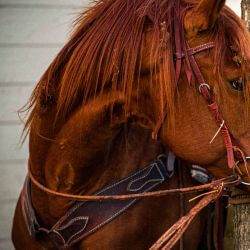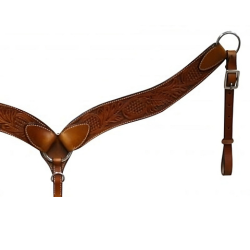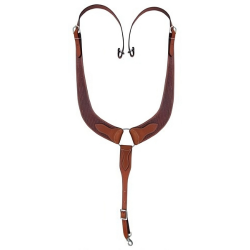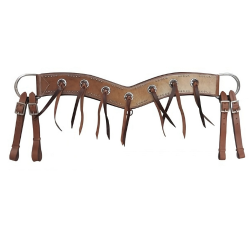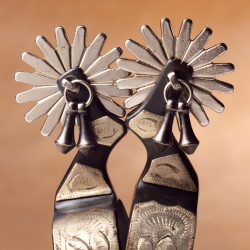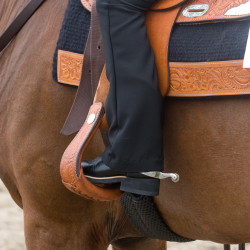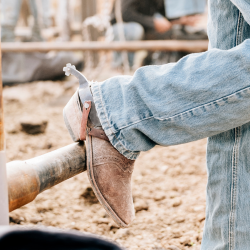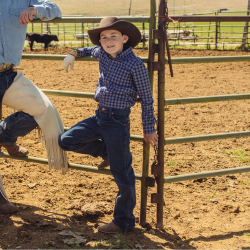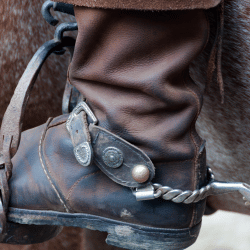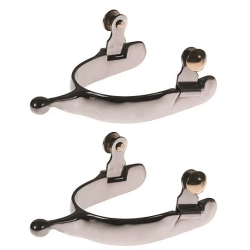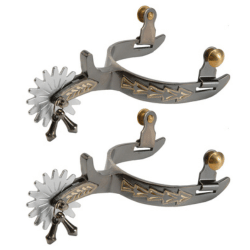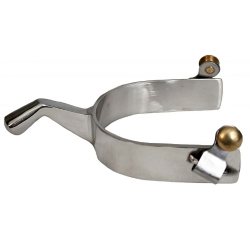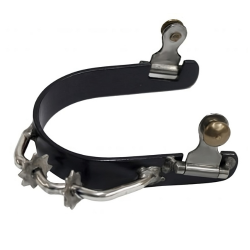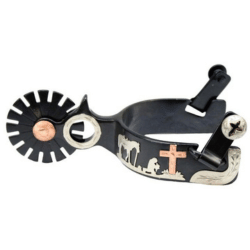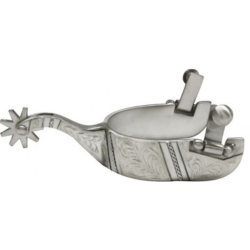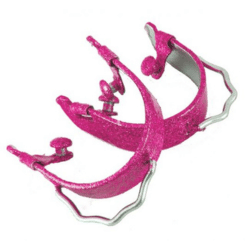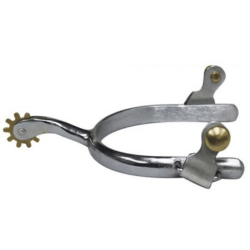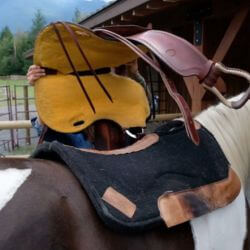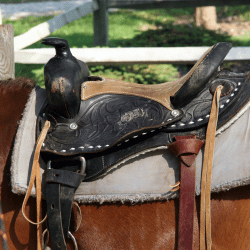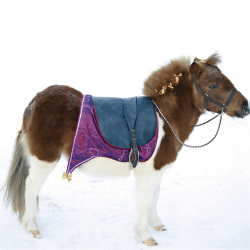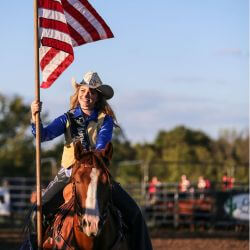Horses are magnificent creatures that have been serving humans for centuries. Whether used for work, sport, or leisure, horses require proper equipment to ensure their comfort and safety. One essential piece of equipment for horse owners is the breast collar. A breast collar is a strap that runs across the horse's chest, attaching to the saddle or harness. It serves multiple purposes, such as providing stability, preventing the saddle from sliding back, and distributing the weight of the load more evenly.
However, not all breast collars are created equal. There are various types of breast collars designed for specific purposes and disciplines. In this blog post, we will explore the different types of breast collars for horses and their unique functions. Whether you are a seasoned horse owner or a novice rider, understanding the different options available will help you make an informed decision when selecting the right breast collar for your horse.
We will delve into the design and function of pulling breast collars, tripping breast collars, roping breast collars, and show breast collars. Each type serves a specific purpose, and we will explore when it is appropriate to use them. Additionally, we will provide valuable tips on how to properly fit these breast collars to ensure the horse's comfort and safety.
So, if you are curious about the different types of breast collars available and how they can benefit your horse, join us on this informative journey. By the end of this blog post, you will have a comprehensive understanding of the purpose and function of each type of breast collar, allowing you to make an informed decision when selecting the right one for your horse. Let's dive in and explore the world of breast collars for horses!
Introduction: Understanding the Purpose and Function of Horse Breast Collars
A breast collar is an essential piece of equipment for horse owners, serving a crucial purpose in ensuring the horse's comfort and safety during various activities. In this section, we will explore the fundamental aspects of horse breast collars, including their purpose, function, and importance in equestrian activities.
Purpose of Horse Breast Collars
The primary purpose of a horse breast collar is to provide stability and support by securing the saddle or harness in place. It helps prevent the saddle from sliding backward, especially during activities that involve quick turns, sudden stops, or heavy loads. By keeping the saddle in the correct position, a breast collar contributes to the horse's balance and overall performance.
Another purpose of a breast collar is to distribute the weight of the load more evenly across the horse's chest and shoulders. This helps alleviate pressure on the horse's back, reducing the risk of discomfort or injury. Additionally, a properly fitted breast collar can enhance the horse's freedom of movement by allowing the shoulders to move freely and without restriction.
Function of Horse Breast Collars
Breast collars function by attaching to the saddle or harness and running across the horse's chest. They are typically made of leather or nylon and consist of a central strap that rests against the horse's chest, along with two side straps that connect to the saddle or harness. The collars are adjustable to ensure a proper fit for different horse sizes and conform to the horse's body shape.
The central strap of the breast collar is positioned between the horse's front legs, just above the point of the shoulder. It should fit snugly against the chest but not be overly tight or restrictive. The side straps then attach to the saddle or harness, providing stability and preventing backward movement of the saddle.
Importance of Horse Breast Collars in Equestrian Activities
Horse breast collars play a vital role in various equestrian disciplines and activities. They are commonly used in disciplines such as trail riding, ranch work, roping, and driving. When horses are required to perform tasks that involve sudden stops, quick turns, or carrying heavy loads, the use of a breast collar becomes even more crucial.
By using a breast collar, horse owners can ensure the safety of both the horse and the rider. The stability provided by the breast collar helps prevent the saddle from slipping backward, which could lead to accidents or injuries. Additionally, the even weight distribution achieved through the use of a breast collar reduces the risk of strain on the horse's back and shoulders.
Overall, understanding the purpose and function of horse breast collars is essential for every horse owner. It allows for the proper selection and use of a breast collar that suits the specific needs of the horse and the intended activity. In the following sections, we will explore the different types of breast collars available for horses and their specific functions.
Pulling Breast Collars
Pulling breast collars are a specific type of breast collar designed to assist horses in pulling heavy loads. In this section, we will explore the design and function of pulling breast collars, as well as when they are most commonly used and provide tips for proper fitting.
Design and Function of Pulling Breast Collars
Pulling breast collars have a distinctive design that sets them apart from other types of breast collars. They typically consist of a wide, padded strap that runs horizontally across the horse's chest, just behind the shoulders. This strap is often made of sturdy leather or nylon material to withstand the demands of pulling heavy loads.
To provide additional support and stability, pulling breast collars may feature adjustable straps that connect from the horizontal strap to the saddle or harness. These straps help distribute the weight of the load evenly across the horse's chest and shoulders, reducing the strain on the horse's back.
One key feature of pulling breast collars is the presence of a breast plate or neck strap. This additional strap runs vertically from the horizontal strap, up the horse's neck, and attaches to the harness or collar. The breast plate helps prevent the breast collar from slipping backward during intense pulling activities.
When to Use Pulling Breast Collars
Pulling breast collars are commonly used in various working situations where horses are required to pull heavy loads. These include agricultural work, logging, carriage driving, and other tasks that involve hauling or pulling equipment or materials. Pulling breast collars provide support and stability to the horse, allowing them to effectively use their strength and distribute the load evenly.
Tips for Proper Fitting
Proper fitting of a pulling breast collar is essential to ensure the horse's comfort and prevent any discomfort or injury. Here are some tips for fitting a pulling breast collar correctly:
-
Measure the horse: Start by measuring the horse's chest to determine the appropriate size of the pulling breast collar. It should fit snugly but not be overly tight or restrictive.
-
Adjust the horizontal strap: Place the pulling breast collar on the horse's chest, ensuring that the horizontal strap rests just behind the shoulders. Adjust the length of the strap so that it is neither too loose nor too tight. It should allow for freedom of movement while providing stability.
-
Attach the side straps: Fasten the side straps to the saddle or harness, ensuring they are securely attached. These straps help distribute the weight of the load and provide additional support.
-
Check the breast plate: If the pulling breast collar includes a breast plate or neck strap, adjust it to fit comfortably around the horse's neck. It should be snug but not constricting.
-
Test for comfort and mobility: Once the pulling breast collar is fitted, carefully observe the horse's movement. Ensure that it does not restrict the horse's shoulder movement or cause any discomfort or rubbing.
By following these fitting tips, horse owners can ensure that the pulling breast collar provides the necessary support and stability without causing any discomfort to the horse.
In the following sections, we will explore other types of breast collars, including tripping breast collars, roping breast collars, and show breast collars. Each type serves a specific purpose and is designed to meet the unique requirements of different equestrian activities.
Tripping Breast Collars
Tripping breast collars are a specialized type of breast collar designed for use in the sport of rodeo and specifically for the activity of team roping. In this section, we will explore the design and function of tripping breast collars, when they are most commonly used, and provide tips for proper fitting.
Design and Function of Tripping Breast Collars
Tripping breast collars have a unique design that sets them apart from other types of breast collars. They consist of a wide, sturdy strap that runs horizontally across the horse's chest, similar to pulling breast collars. However, tripping breast collars often feature a wider and heavier construction to withstand the intense demands of roping activities.
The key feature of tripping breast collars is the addition of a specialized metal plate or horn wrap. This plate or wrap is positioned at the center of the breast collar, just below the horse's neck. Its purpose is to provide a smooth surface against which the rope can slide during the roping event. This feature helps prevent the rope from getting caught or tangled in the breast collar, allowing for a smooth and efficient roping action.
When to Use Tripping Breast Collars
Tripping breast collars are primarily used in the sport of team roping. Team roping involves two riders, a header and a heeler, working together to rope a steer. The header ropes the steer's horns, while the heeler ropes its hind legs. Tripping breast collars are particularly useful for the heeler, as they provide a smooth surface for the rope to slide against when roping the steer's legs.
These breast collars are also commonly used in other roping events, such as calf roping and breakaway roping, where the rope needs to slide freely during the roping action.
Tips for Proper Fitting
Proper fitting of a tripping breast collar is crucial to ensure the horse's comfort and allow for the smooth execution of roping activities. Here are some tips for fitting a tripping breast collar correctly:
-
Measure the horse: Begin by measuring the horse's chest to determine the appropriate size of the tripping breast collar. It should fit snugly but not be overly tight or restrictive.
-
Position the breast collar: Place the tripping breast collar on the horse's chest, ensuring that the horizontal strap rests just behind the shoulders. It should be centered and sit comfortably on the horse's chest.
-
Adjust the strap length: Fasten the tripping breast collar securely, making sure the strap is neither too loose nor too tight. It should allow for freedom of movement while providing stability.
-
Check the metal plate or horn wrap: Ensure that the metal plate or horn wrap is positioned correctly at the center of the breast collar, just below the horse's neck. It should be securely attached and provide a smooth surface for the rope to slide against.
-
Test for comfort and mobility: Once the tripping breast collar is fitted, observe the horse's movement. Ensure that it does not restrict the horse's shoulder movement or cause any discomfort or rubbing.
By following these fitting tips, horse owners can ensure that the tripping breast collar provides the necessary support and functionality required for roping activities.
In the following sections, we will explore other types of breast collars, including roping breast collars and show breast collars. Each type serves a specific purpose and is designed to meet the unique requirements of different equestrian activities.
Roping Breast Collars
Roping breast collars are a specialized type of breast collar designed for use in rodeo events, particularly for roping activities such as calf roping, steer wrestling, and team roping. In this section, we will explore the design and function of roping breast collars, when they are most commonly used, and provide tips for proper fitting.
Design and Function of Roping Breast Collars
Roping breast collars are specifically designed to provide support, stability, and protection to the horse during the intense movements of roping activities. They typically consist of a wide, sturdy strap that runs horizontally across the horse's chest, similar to tripping and pulling breast collars. However, roping breast collars often have a heavier construction and may feature additional padding or reinforcement.
One distinctive feature of roping breast collars is the presence of a center dee ring or a metal plate positioned at the center of the breast collar. This dee ring serves as an attachment point for the lariat or rope used in roping activities. It helps prevent the breast collar from sliding back and provides a secure anchor point for the rope during the roping action.
Roping breast collars are designed to distribute the pressure and strain evenly across the horse's chest and shoulders. The wide, padded strap helps prevent discomfort and rubbing, while the sturdy construction ensures durability and longevity, even under the rigors of intense roping activities.
When to Use Roping Breast Collars
Roping breast collars are primarily used in rodeo events and activities that involve roping. They are commonly seen in calf roping, steer wrestling, and team roping. These events require precise timing, agility, and strength from both the rider and the horse.
Roping breast collars provide crucial support to the horse during the roping action. They help stabilize the saddle and prevent it from slipping backward or sideways when the rider makes sudden stops or changes in direction while roping. The breast collar also helps distribute the pressure from the rope across the horse's chest and shoulders, minimizing the risk of discomfort or strain.
Tips for Proper Fitting
Proper fitting of a roping breast collar is essential to ensure the horse's comfort and safety during roping activities. Here are some tips for fitting a roping breast collar correctly:
-
Measure the horse: Begin by measuring the horse's chest to determine the appropriate size of the roping breast collar. It should fit snugly but not be overly tight or restrictive.
-
Position the breast collar: Place the roping breast collar on the horse's chest, ensuring that the horizontal strap rests just behind the shoulders. It should be centered and sit comfortably on the horse's chest.
-
Adjust the strap length: Fasten the roping breast collar securely, making sure the strap is neither too loose nor too tight. It should allow for freedom of movement while providing stability.
-
Check the dee ring or metal plate: Ensure that the dee ring or metal plate is positioned correctly at the center of the breast collar. It should be securely attached and provide a reliable attachment point for the rope.
-
Test for comfort and mobility: Once the roping breast collar is fitted, observe the horse's movement. Ensure that it does not restrict the horse's shoulder movement or cause any discomfort or rubbing.
By following these fitting tips, horse owners can ensure that the roping breast collar provides the necessary support, stability, and protection required for roping activities.
In the following sections, we will explore another type of breast collar, namely the show breast collar. Show breast collars are designed specifically for use in horse shows and competitions, where appearance and style play a significant role.
Show Breast Collars
Show breast collars are a specialized type of breast collar designed specifically for use in horse shows and competitions. In this section, we will explore the design and function of show breast collars, when they are most commonly used, and provide tips for proper fitting.
Design and Function of Show Breast Collars
Show breast collars are designed to enhance the horse's appearance and add a touch of elegance during showmanship and other competitive events. They are often crafted with intricate details, high-quality materials, and decorative elements to complement the overall presentation of the horse and rider.
Show breast collars come in a variety of designs, incorporating elements such as silver conchos, ornamental tooling, fancy stitching, and gemstone embellishments. They are typically made from premium leather or synthetic materials to ensure durability and a polished appearance.
While show breast collars are primarily focused on aesthetics, they still serve a functional purpose. They help keep the saddle in place and provide some stability during showmanship maneuvers or in disciplines where a breast collar is required. However, the primary emphasis of show breast collars is on their visual appeal rather than their practical function.
When to Use Show Breast Collars
Show breast collars are most commonly used in horse shows and competitions where the horse's appearance plays a significant role. They are seen in various disciplines such as Western pleasure, reining, dressage, and halter classes. Show breast collars enhance the overall presentation of the horse and rider, adding a touch of sophistication and style to their performance.
It is important to note that show breast collars are not typically used in high-intensity activities such as roping or heavy-duty work. Their delicate design and focus on aesthetics make them more suitable for low-impact and controlled showmanship events.
Tips for Proper Fitting
Proper fitting of a show breast collar is crucial to ensure the horse's comfort and enhance their appearance. Here are some tips for fitting a show breast collar correctly:
-
Measure the horse: Begin by measuring the horse's chest to determine the appropriate size of the show breast collar. It should fit snugly but not be overly tight or restrictive.
-
Position the breast collar: Place the show breast collar on the horse's chest, ensuring that the horizontal strap rests just behind the shoulders. It should be centered and sit comfortably on the horse's chest.
-
Adjust the strap length: Fasten the show breast collar securely, making sure the strap is neither too loose nor too tight. It should allow for freedom of movement while providing stability.
-
Check for aesthetics: Ensure that the show breast collar enhances the horse's appearance and complements their overall presentation. Pay attention to the design, decorative elements, and overall style of the breast collar.
-
Test for comfort and mobility: Once the show breast collar is fitted, observe the horse's movement. Ensure that it does not restrict the horse's shoulder movement or cause any discomfort or rubbing.
By following these fitting tips, horse owners can ensure that the show breast collar adds an elegant touch to their horse's appearance while still providing the necessary support and comfort during showmanship events.
In the following sections, we will conclude our exploration of the different types of breast collars and provide a summary of the key points discussed.

